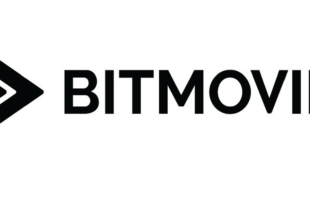The Korean television industry has begun an exciting chapter since our last country focus a year ago. Hallyu (Korean Wave) was said by observers to have reached its peak in the mid 2000s, but a resurgence at the beginning of last year has meant the wave is now back on track.
This momentum has given 2011 a much different start than its predecessor. Last year was largely about recovery: finding new markets like the Middle East, Africa and South America to export Korean content to, as well as expanding the genres of drama beyond the usual romantic comedy offering.
This year, the Korean TV industry has branched out beyond the drama genre through the acquisition of several popular foreign reality and lifestyle programme formats by major terrestrial and PayTV networks, such as Munhwa Broadcasting Corporation (MBC) and Korean Broadcasting System (KBS). The launch of new channels due to the increasing amount of high-definition (HD) programming, alongside the introduction of 3D television (3D TV) content, has also strengthened viewing choice.
(Formerly) ‘foreign’ formats
A number of hit foreign formats launched on networks this year. Two of the most significant deals were the sale of BBC’s Dancing with the Stars (DWTS) and ITV’s Opera Star 2011 to Seoul-based networks, MBC and KBS respectively. DWTS represented the UK broadcasting giant’s first ever format license sale in South Korea, while ITV’s deal with tvN sees Korea become one of the first countries in the world outside of Europe to adopt the concept of Popstar to Operastar.
For a country as ethnocentric and monolingual as South Korea, the acquisition of such foreign formats signifies a changing appetite for a greater variety of content.
Joyce Yeung, Senior Vice President and General Manager Asia for BBC Worldwide Sales and Distribution, believes this is only the beginning of a new trend. “Foreign formats are definitely gaining bigger presence in South Korea compared to a few years ago,” Yeung told TV ASIA Plus.
Asked what the reasons are for this increasing popularity of foreign formats, Yeung attributed it to changing audience consumption patterns brought on by the interaction of an increasingly Westernized television landscape and a more aware and informed audience.
“The fact that more western formats have been introduced in recent years opens up more options to the Korean audience. Their success in turn fuels the viewers’ demand for more,” added Yeung.
Tae-Ho Sung, Project Manager at the Department of Contents Business Office at KBS, agreed with Yeung. He said there is an increasing demand for foreign show concepts all around because “Koreans are looking for quality TV programmes ranging from animation to documentaries”, that originate not only from within their shores but also those “telecast on foreign channels”.
Haewon Chin, Marketing Manager, International business and Relations division at MBC, on the other hand, has a different theory on this. “I think it is because of tighter budgets. It costs less money to buy the format. Furthermore, several formats in CTV were successful and terrestrial stations are now starting to buy the formats too. If a show becomes very popular, the number of stations or companies buying formats will increase,” adding to the domino effect.
This domino effect is what Joon Lee, Senior Vice President, Content and Communication; and General Manager, Korea, Fox International Channels (FIC), thinks is the exact cause for the change in programming strategies. He said, “Now, it (foreign format acquisition) is becoming a trend. In Korea, when it’s in, it’s in and when it’s hot, it’s hot. Now is probably the right time for format providers to be in Korea. Pretty much everyone is looking for format rights.”
Modest ratings
While the increasing number of license deals indicates a spike of popularity in foreign formats, statistics on the contrary, show that this is inconsistent. Some programmes garnered only modest ratings, while others rated very highly.
For example, according to Sung, 1 vs.100 (shown on KBS2) recorded a 10 per cent rating on average, while competitor MBC’s DWTS scored an 11 per cent average.
Contrastingly, BBC’s natural history series Human Planet premiered on KBS this July to a rating of 12.3 per cent nationally, taking the top spot in its timeslot, shared Yeung. This rating is typically considered impressive for a documentary, and even more so for a foreign one.
Yet, moderate ratings are not stopping networks from continuing this jump onto the foreign format bandwagon.
Sung believes the lackluster reception is only an initial effect but numbers will increase as word catches on and the shows become more established.
Haewon Chin echoed Sung’s sentiments. “Worldwide, formats are fast becoming the centre of attention.”
Going glocal
But formats are not the only foreign content getting airtime. Even entire foreign channels like Disney, AXN and FX are being localized and launched on Korean television.
On 1 July, Disney Channel Korea was launched, following an agreement between Korean company SK Telecom and The Walt Disney Company to form a joint venture for operating all future Disney-branded channels. Globally, this was Walt Disney’s fi rst ever joint venture.
Disney Channel Korea replaced Disney Channel Asia, which aside from being the only version of the channel previously available in the country, was broadcast only in English. This, and the new Disney Junior channel are now broadcast in 100 per cent Korean.
So why is the localization of foreign content and channels necessary? FIC’s Joon Lee said that “Localization or customization is a tool to break into each market.” He added, “Acceptance levels of foreign programmes in Korea are just dramatically different. Foreign channels have finally learnt that and for them to become anything meaningful, they have to be there.”
Lee’s theory on localization manifests itself most interestingly, in the form of FIC’s FX Korea. Launched in a joint venture with Taekwang Group, the channel took on a special strategy, with the aim of becoming the centre of adult male entertainment in Korea. FIC did so by targeting males through featuring more adult and male-oriented content, such as Archer, Mad Men and WWE Wrestling.
“The channel is performing very strong,” said Lee, adding that “In Korea, regulation on censorship is a lot softer than say, Southeast Asia. We can actually go further when it comes to male entertainment.” AXN Korea is one other newly localized foreign channel. The entertainment channel came into being when Sony formed a jointventure with CU MEDIA in January, to manage and operate AXN in the country. AXN Korea offers products like CSI and NCIS: LA alongside local acquisitions from terrestrial stations.
Ricky Ow, Senior Vice President and General Manager, Networks, Asia at Sony Pictures Television, said local partners not only help Sony Pictures Television gain distribution in the market place, but they also “bring a lot more local knowledge and expertise in guiding us”.
But localization did not happen overnight and by chance. Basic infrastructure first has to be in place and KBS’ Sung says two conditions were already present that made and continues to make the localization of entire foreign channels possible: one, pay-TV operators have more capacity to carry foreign channels; and two: Korean viewers are more receptive than ever to watch localized foreign channels.
“Korea has become a Mecca for launching new foreign channels onto IPTV and cable networks these days. We will increasingly see this trend as the digitalization of cable TV operators are already in place,” said Sung.
Ow added that localization in Korea is made even more inevitable by the “legal requirement for international channels to have a local partner should they wish to enter into the local market”.
New turf
But it is not just foreign content that is coming into Korea. Korean content (via fully Korean-dedicated international channels) is also going out.
Launched first in Malaysia in late 2010, Sony Pictures Entertainment’s (SPE) ONE and ONE HD channels air subtitled and dubbed Korean content to cater to other Asian audiences. The channels are now available in Singapore (also in Bahasa Malayu), Indonesia and Cambodia.
Earlier this year, ONE HD became the top rated HD channel on Malaysia’s Astro B.yond pay-TV platform, beating the operator’s 11 other HD channels, with full day ratings that were four times higher than its closest competitor, according to Media Research Asia.
The 3D question
Another signifi cant achievement this year was the broadcast of the fi rst ever 3D documentary on Korean television. Angkor, the Land of Gods, aired on 18 April on terrestrial channel Educational Broadcasting System (EBS).
According to Jeong Yong Hong, Team Director, Global Business Division, Marketing Team at Korea Creative Content Agency (KOCCA), demand for 3D content is fast gaining strength. He said this is due to “The increased distribution of 3D TVs and the launch of 3D dedicated channels” like Sky3D, which debuted in March.
Hong added, “Such genres as movies, animations, performing arts (concerts, musicals, etc) are the ones which are being produced in 3D.”
Despite the higher demand, 3DTV is not without its critics.
FIC’s Lee said, “A lot of people still consider 3D as an ‘events’ kind of content. They don’t see it as something they will use everytime. Having to watch your news, documentaries, movies and dramas in 3D with the glasses – the audience doesn’t see it that way as yet,” said Lee.
Chin shared similar thoughts. She said “I think it will take longer for 3D to dominate the market, unlike HD. With HD, our lifestyle did not change. But with 3D, we need glasses. So for 3D, the change is bigger than that from SD to HD.”
Despite these drawbacks, 3D remains a rising force (even if only within documentary and sports programming). Angkor, the land of Gods, according to Peter Lee, Director, International Marketing at EBS, has been well-received and even been sold to some North American and Asian countries. Other broadcasters like MBC are beginning to follow suit.
Currently, EBS is already in the midst of producing a second 3D documentary, which is focused on nature, while Haewon Chin shared that an MBC documentary, entitled Haenyeo and the Sea, slated for an end 2011 release, is in production now. Chin added, “It will be the first Korean ocean documentary in 3D.”
According to KOCCA’s Hong, State support of the 3D industry is also helping to pave the way for bigger things. “The Korean government has recognized the importance of 3D industry and is implementing policies to support the industry such as providing 3D production facilities and infrastructure to small and medium sized production companies and nurturing of experts,” he said.









